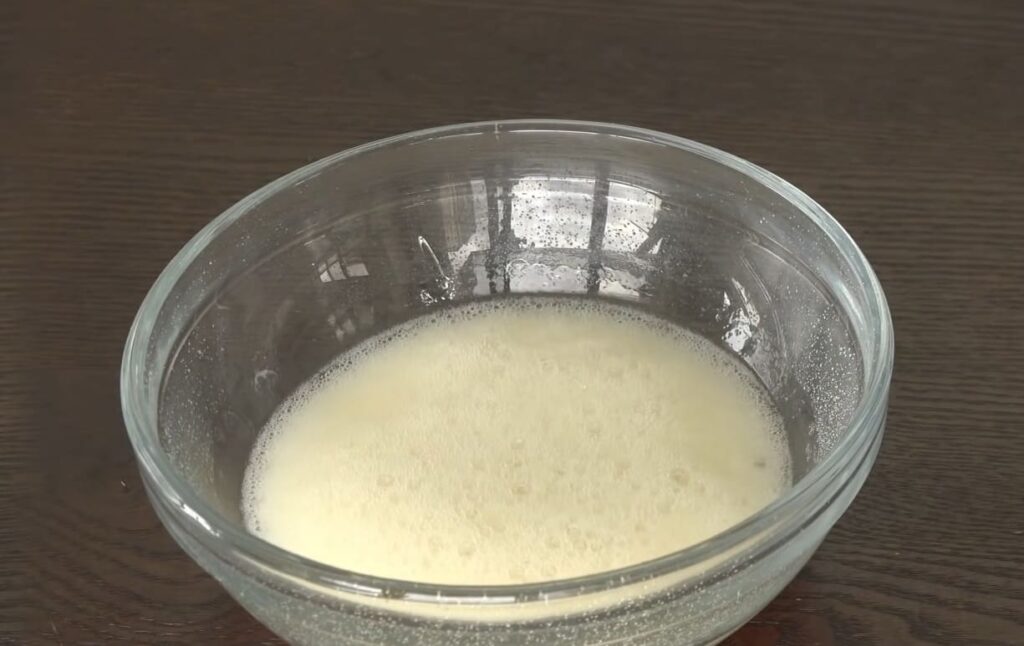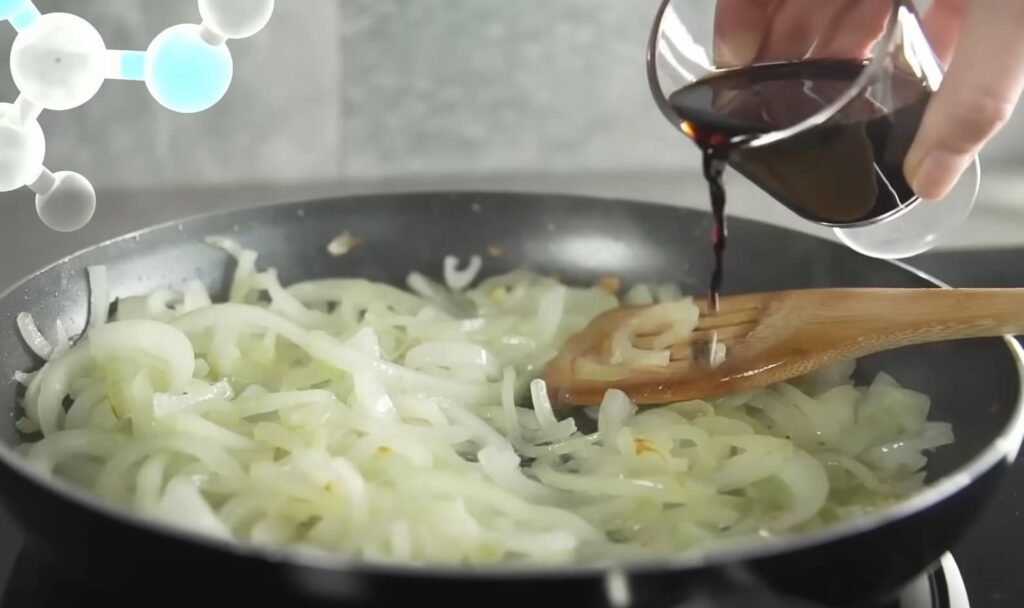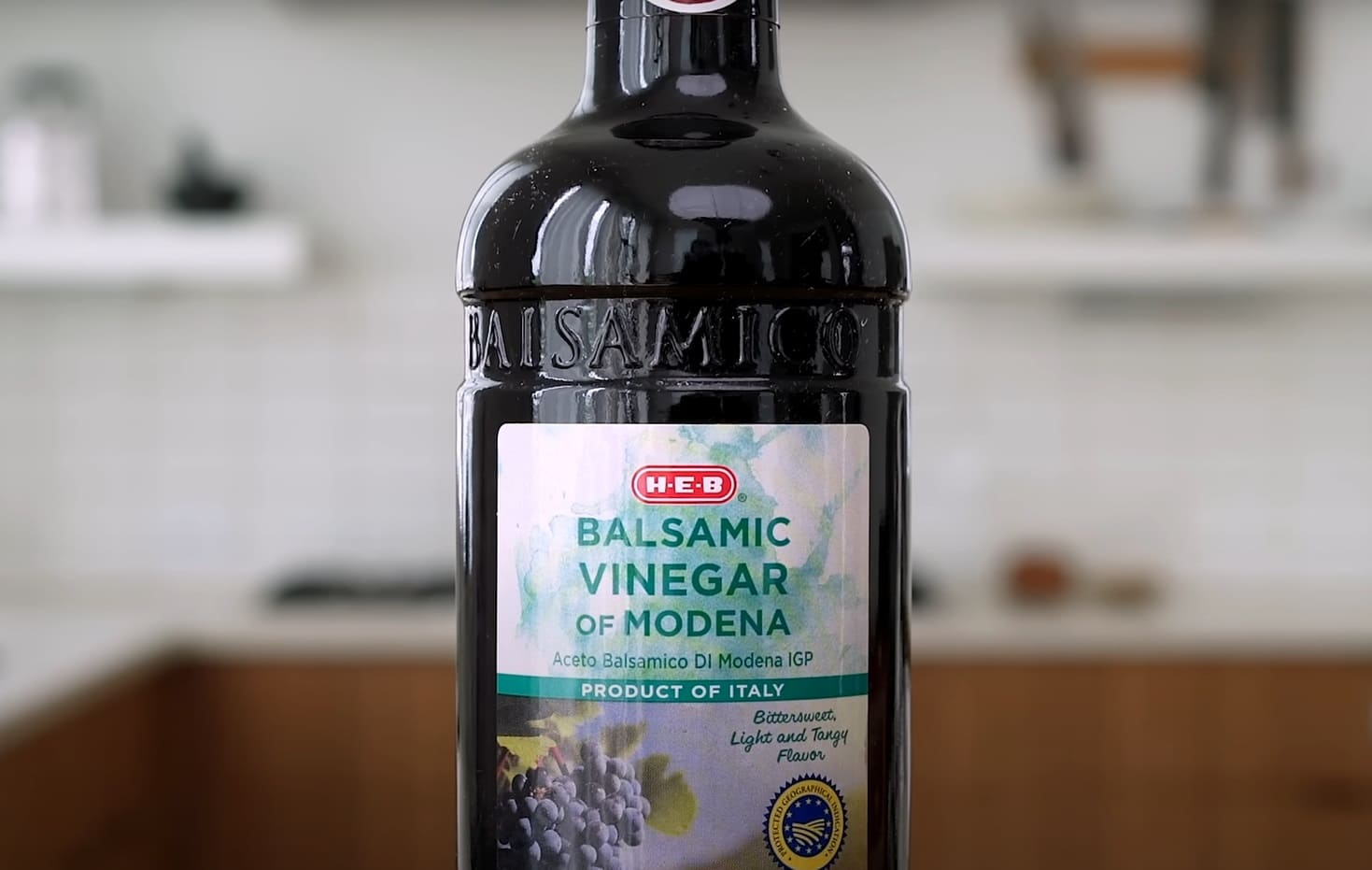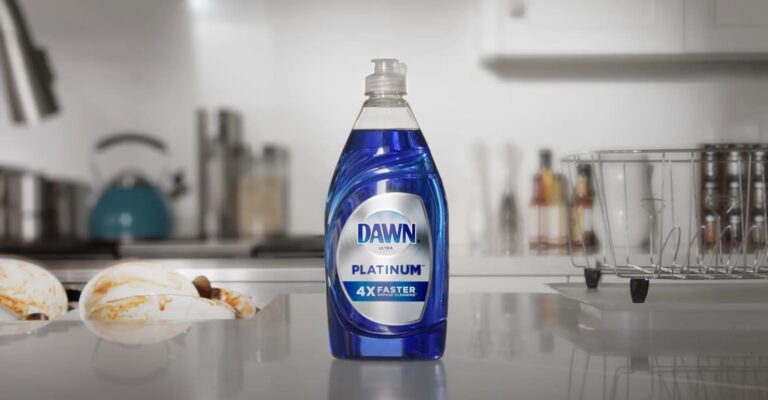Can You Mix Baking Soda and Vinegar?
What happens when baking soda and vinegar mix? These ordinary kitchen items create an exciting fizzy reaction together. But why does this bubbling effect occur? Is the combination safe and beneficial beyond fun science projects? This article explores the intriguing chemistry between baking soda and vinegar. Learn whether this reactive duo can be harnessed as an effective homemade cleaner. The surprising applications of baking soda and vinegar will make you look at your pantry in a new way!
Quick Answer
Yes, you can safely mix baking soda (sodium bicarbonate) and vinegar (acetic acid). When combined, an acid-base reaction occurs, creating carbon dioxide gas. This causes the fizzing and bubbling effect. Though dramatic, the reaction is entirely safe and has several household uses. For cleaning, the mixture helps dissolve grime and freshen drains. It can also be lightly abrasive when scrubbing. For cooking, adding baking soda to vinegar recipes allows batters to rise higher and bake lighter. The reaction releases CO2 bubbles, helping lift and aerate baked goods. So, mixing vinegar and baking soda is acceptable and has practical cleaning and culinary benefits.

Baking Soda and Vinegar Reaction
A chemical reaction occurs when baking soda (NaHCO3) and vinegar (CH3COOH) are mixed together. The reaction produces carbon dioxide gas (CO2), which is evident because of the bubbling, foaming mixture.
The chemical equation for the reaction is:
NaHCO3 + CH3COOH → CO2 + H2O + Na CH3COO
During this reaction, the solid baking soda and the liquid vinegar chemically react to form carbon dioxide gas and water. The gas bubbles are trapped in the liquid solution, creating a foamy texture.
This exciting reaction demonstrates a few core scientific principles:
- Acid-base reactions – Vinegar is an acid (CH3COOH) and baking soda is a base (NaHCO3). When they interact, the acid protonates the carbonate base.
- Gas-forming reactions – The products, CO2, and H2O, are produced as gases under these conditions. This causes the dramatic bubbling effect.
- Solubility – The CO2 produced is partially soluble in the liquid solution, creating carbonic acid and bubbles.
- Foams – The gas bubbles are stabilized in the liquid foam. This allows the mixture to be used as a cleaning foam.
The baking soda and vinegar reaction can be used for some nifty chemical magic in homes and kitchens. It’s a safe, fun reaction for science experiments and demonstrations. With just some simple kitchen ingredients, you can witness some neat chemistry for yourself!
Baking Soda and Vinegar Experiment
The baking soda and vinegar experiment is a classic science demonstration that allows students to observe several facets of a chemical reaction. By mixing together simple kitchen ingredients, this safe and easy experiment provides a lot of chemical bang for your buck!
The experiment involves placing solid baking soda (sodium bicarbonate) into liquid vinegar (acetic acid). An immediate reaction occurs, producing carbon dioxide gas. This gas release causes bubbling and foam as CO2 expands throughout the vinegar.
This activity clearly illustrates a chemical change versus a physical change. When the baking soda dissolves and reacts with the vinegar, the products are chemically different from the starting materials. This is evidenced by the gas formation, indicating a new substance has been produced.
The experiment also demonstrates:
- Representation of all 3 physical states of matter – solid baking soda, liquid vinegar, gaseous CO2 bubbles
- Observing indicators of a chemical reaction – gas, foam, temperature change
- Acid-base chemistry – interaction between an acid (vinegar) and a base (baking soda)
- Solubility and dissolution – the baking soda wholly dissolves and reacts in the vinegar over time
As the reaction proceeds, the baking soda will eventually fully dissolve and react with the vinegar, producing a new liquid solution of sodium acetate and water. The amount of fizzing and foaming will also subside once the reaction runs its course.
By witnessing firsthand the reaction between common household chemicals, students can gain a deeper understanding of chemical reactions and the transformation of matter. The baking soda and vinegar experiment provides an engaging opportunity to learn hands-on science!

Cleaning with Baking Soda and Vinegar
Many cleaning tips suggest mixing baking soda and vinegar together as a magical homemade cleaner. However, it’s important to note that these two should not be pre-mixed for cleaning purposes.
Vinegar is an acid, and baking soda is a base. When combined, they undergo an acid-base reaction that produces carbon dioxide gas, water, and sodium acetate. No new cleaning compounds are formed. The dramatic fizzing and bubbling is just the neutralization reaction occurring.
Mixing baking soda and vinegar ahead of time wastes the ingredients. The reaction will run to completion quickly, leaving only neutral water and salt behind. This mixture has no enhanced cleaning power. The carbon dioxide bubbles may help lift some dirt, but the effect is minimal.
For cleaning, baking soda and vinegar are better used separately:
- Baking soda can scrub away dirt and grime as a gentle abrasive. Its alkaline properties also help deactivate odors.
- Vinegar’s acidity helps dissolve mineral deposits, soap scum, and more as a cleaning rinse or spray.
To harness their full cleaning potential, use baking soda and vinegar in sequence – not combined simultaneously. Apply baking soda to scrub, then spray vinegar to wipe away. This preserves the unique cleaning benefits of each ingredient.
So don’t mix baking soda and vinegar and wait for a magical cleaner. Use them separately and sequentially to take advantage of their complementary cleaning superpowers! With the right technique, these pantry staples can tackle your toughest cleaning challenges.
Baking Soda and Vinegar for Cooking
Baking soda and vinegar are both useful ingredients for cooking and baking. However, it’s important to use them properly to get the best results.
Baking soda is a common leavening agent in baked goods like cakes, muffins, and cookies. When baking soda reacts with moisture and an acidic ingredient, carbon dioxide gas is produced. This helps batters rise and baked goods get that desirable light and fluffy texture.
Vinegar can provide acidity in place of lemon juice in recipes ranging from salad dressings to marinades. The sour taste of vinegar also balances out flavors. Distilled white vinegar is commonly used, while balsamic, rice, or fruit kinds of vinegar add more complex flavors.
However, baking soda and vinegar should not be mixed together directly in recipes. The acid-base reaction they undergo alters the taste and texture of the food. For example, relying on their reaction to make cupcakes rise can result in a soapy, metallic flavor. If both ingredients are called for, they must react with other components of the dish separately.
To utilize the reaction for cooking, bake with baking soda first, then add vinegar later. For example, use baking soda in the cake batter itself. After baking, sprinkle on a fruit vinegar glaze. This way, leavening is achieved, and the reaction does not occur until after cooking, preventing a soapy taste.
With the right techniques, home cooks can take advantage of baking soda and vinegar’s unique culinary abilities. Use them separately at the proper stages to lift, leaven, and flavor recipes while avoiding an unappetizing chemical reaction.

Baking Soda and Vinegar for Health
Baking soda and vinegar are commonly touted as home remedies for various minor ailments. However, it’s important to understand their limitations and use them carefully.
Baking soda can temporarily relieve heartburn and indigestion when dissolved in water, thanks to its neutralizing ability. Its mild antiseptic properties may also soothe minor skin irritations.
Vinegar has antibacterial properties and can be used diluted as a gentle disinfectant. It may also provide minor relief for sore throats when gargled. Apple cider vinegar is often promoted as a health supplement, though evidence for its benefits is lacking.
However, baking soda and vinegar should not be mixed together and ingested. Consuming the acidic reaction can disrupt the body’s acid-base balance, potentially causing nausea, discomfort, and vomiting. The gas release can also lead to painful bloating.
When using baking soda and vinegar separately:
- Always dilute fully in water before drinking to avoid irritation.
- Use sparingly – they are not cure-alls and provide temporary symptom relief at best.
- Don’t replace medical treatments – consult doctors for health conditions.
- Stop use if side effects develop.
So, while baking soda and vinegar have minor uses, they should not be mixed as an internal health remedy. Be an informed consumer when considering home remedies, and check with healthcare professionals regarding medical claims. When used judiciously, common kitchen ingredients can provide certain mild benefits. But always research and exercise caution when ingested.
Baking Soda and Vinegar for Gardening
Gardeners have long reached for baking soda and vinegar to help nurture plants and battle garden invaders. However, these two reactive ingredients should be used separately and with care.
Baking soda’s alkaline nature makes it effective against fungal diseases. Mixing 1 tbsp baking soda per 1 quart of water and spraying plants can help control powdery mildew and other fungal infections.
Vinegar is a non-selective herbicide. Spraying undiluted vinegar can kill unwanted weeds. Its acetic acid damages cell membranes. Repeat applications are likely needed.
However, baking soda and vinegar should not be combined together when gardening. Their acid-base reaction can drastically alter soil pH if poured into the ground. Soil life relies on a specific pH range. Dramatic shifts can kill helpful microorganisms and affect nutrient availability for plants.
Use baking soda and vinegar sequentially – not simultaneously. Baking soda first suppresses fungal spores. Vinegar later cleans the foliage.
When using for gardening:
- Always test on a small area first to check for phytotoxicity.
- Monitor plants closely and discontinue use if any damage occurs.
- Use protective gear like gloves and avoid inhaling fumes.
With proper precautions, baking soda and vinegar can be helpful additions to an integrated pest management plan. But be sure not to mix them indiscriminately, as their reaction can cause more harm than good in delicate garden ecosystems.

FAQ
What are the uses of mixing baking soda and vinegar?
Though highly reactive, a baking soda and vinegar mixture has several practical uses:
- Cleaning – The reaction helps lift dirt. Baking soda acts as a gentle abrasive, and vinegar dissolves grime.
- Odors – The reaction neutralizes odors. The gas release helps deodorize.
- Drain cleaning – The bubbles can break up clogs and clear blockages.
- Science experiments – The dramatic reaction is ideal for chemistry experiments and demonstrations.
- Cooking – Adding baking soda to vinegar before mixing into batters helps lift and aerate baked goods.
How long does the baking soda and vinegar reaction last?
The reaction begins immediately upon mixing but slows down over time. Fizzing and bubbling will become less vigorous after about 5 minutes as the acid and base neutralize each other. The reaction typically completes in 20-30 minutes unless more baking soda or vinegar is added.
Is the baking soda and vinegar reaction exothermic or endothermic?
The reaction is slightly exothermic, meaning it releases heat energy. As an approximation, the temperature of the solution may rise by about 34-36°F as the reaction occurs. This heat release is due to the breaking and formation of chemical bonds during the reaction.
What happens if you mix baking soda and vinegar in a closed container?
Combining baking soda and vinegar in a sealed container is not recommended, as it can cause a pressure buildup from the rapid release of CO2 gas. This gas release can lead to an explosive rupture of the container. At a minimum, it will pop the lid open. For safe science experiments, keep containers open or use breezy containers like bottles with attached balloons. Never fully seal in the reaction.
Can you change the rate of reaction between baking soda and vinegar?
Yes, there are several ways to alter the rate of reaction:
- Increase surface area – Powdered baking soda reacts faster than chunks.
- Higher temperature – Warming the vinegar speeds up the reaction.
- Increase concentration – More baking soda and/or vinegar speeds things up.
- Add catalyst – Adding salt can accelerate the reaction rate.
- Stirring – Agitation brings more contact between reactants.
The reaction slows down as products accumulate. To keep the reaction brisk, add more baking soda and vinegar periodically.
Related Video: Baking Soda and Vinegar Science Experiments
Conclusion
Over the course of our discussion, we’ve explored a variety of aspects related to combining baking soda and vinegar. This classic chemical reaction has long captivated both scientists and laypeople alike with its dramatic fizzing and foaming.
We’ve seen that these common kitchen staples can indeed be mixed safely, producing carbon dioxide gas and some heat along with water and sodium acetate. Though highly reactive, their combination has practical applications across household cleaning, cooking, DIY science experiments, and more.
However, while interesting, their reaction alone doesn’t serve as a cure-all solution. To tap into their full potential, baking soda and vinegar are often best utilized separately and sequentially. Allowing them to react prematurely can diminish their individual effectiveness for cleaning, baking, gardening, and health purposes.
Understanding the science allows us to harness the benefits of their combined reaction when desirable while also learning when it’s better to keep these two versatile ingredients apart. With knowledge and care, even the most basic pantry items can facilitate minor miracles.







